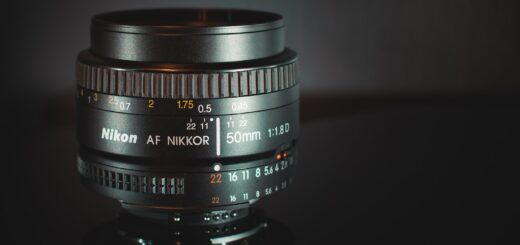Prime Lenses vs Zoom Lenses

Recall that there are generally 3 types of lenses:
- Prime lenses with a fixed focal length
- Variable aperture zoom lenses with variable maximum apertures across its focal length range
- Fixed aperture zoom lenses with fixed maximum aperture across its focal length range
Let’s take a deeper look into each lens class, and compare them to have a look at the merits and demerits of each lens type.
Prime Lenses
Each prime lens offer only one single focal length, and thus its angle of view is fixed and cannot be changed.
In order to frame something wider or tighter, the term “zooming with your feet” is often heard as you have to move around to compose a wider or tighter shot when using a prime lens.
Prime lenses are usually simpler in their optical construction, and as such it is possible to design cheaper and lighter prime lenses without much optical compromises, and as such are often much sharper than their zoom counterparts due to less light transmission loss and less glass-air surface for reflections.
And this simpler optical construction also allows for bigger maximum apertures to be easier constructed, which is one of the main reasons why wide-aperture prime lenses are highly sought after by portrait photographers who want the soft background look in their images.
It is good to note that modern day expectations have also led to high end prime lenses with very complex optical constructions as well, which have high acuity throughout the entire frame and have physical optical corrections in place for various optical defects – so it is not unusual to find huge and heavy prime lenses around too.
Variable Aperture Zoom Lenses
Zoom lenses offer a variety of focal lengths to shoot from, and as such are highly versatile and can minimize the amount of lens changes required.
Variable aperture zoom lenses are the most common zoom lenses – the maximum aperture (f/number) available changes with its focal length.
The reason for this is that the actual diameter of aperture blades opening is kept the same, so as you zoom in the [focal length/opening diameter] ratio changes, leading to an increase in the f/number with longer focal lengths.
Variable aperture zoom lenses usually have slightly lower f/numbers than equivalent prime lenses, but they make that up in convenience of covering several focal lengths in one lens.
They come in a variety of zoom ranges – it is not uncommon to see lightweight lenses covering the typical 24-70mm range, or travel-friendly superzooms covering wide angle (24mm) to telephoto range (200mm).
Modern variable aperture zoom lenses have improved quite a bit in recent years such that most of them can be shot wide-open (at its maximum aperture) without producing soft images or having loss in contrast, though many still perform best when stopped down a little bit.
Important Note:
There is often a misconception that variable aperture zoom lenses do not give good image quality and are just budget-friendly lenses made with plenty of compromises. This is definitely not true for all lenses, as each lens is designed to comply to certain prerequisites (be it size, image quality, zoom range etc.), and there are variable aperture zoom lenses that perform at a very high level as well (like the Nikon Z 100-400mm f/4-5.6 S).
Fixed Aperture Zoom Lenses
This class of zoom lenses similarly offer a variety of focal lengths to shoot from, but maintain the same maximum aperture (f/number) regardless of focal length.
This is usually achieved by having a group in front of the actual aperture diaphragm blades move during the zooming process, providing a telescoping effect to enlarge the effective aperture of the entrance pupil.
This peculiar zoom mechanism results in highly complex optical construction, and with extra glass elements involved, fixed aperture zoom lenses are usually heavier and larger than both the variable aperture equivalents or prime lenses. An example is the Canon RF 24-105mm f/4-7.1 vs the RF 24-105mm f/4 as shown below:
Another result of the complex system is that the zoom ranges are normally not too extreme – typically in the ~3x range (like 24-70mm or 70-200mm), and the maximum for modern lenses is the Nikon Z 24-120mm f/4 S (5x zoom).
Fixed aperture lenses are usually made to have a larger maximum aperture than their variable zoom counterparts, and are highly sought after by working photographers for ease of use, especially in manual mode or when shooting with off camera strobes, as the maximum aperture remains constant regardless of focal length so there is no worry for sudden exposure changes.
Important Note:
Fixed aperture zoom lenses do have the reputation of being huge, heavy and expensive, but in recent times technological improvements have made smaller f/2.8 lenses available (e.g. Tamron 28-75mm f/2.8 or 70-180mm f/2.8), and collapsible designs (e.g. Nikon Z 24-70mm f/4S) have made fixed aperture zooms a viable alternative for lightweight travel too.
General Comparison of the 3 Lens Categories
Here is a summary of the three different lens categories:
Prime Lenses
Advantages:
- Larger maximum aperture available
- Smaller and lighter than equivalent zoom lenses
- Less optical compromises leading to better image quality
Disadvantages:
- Single focal length might require more lens changes or moving around to frame shots
- High end modern prime lenses can be very costly
Variable Aperture Zoom Lenses
Advantages:
- Multiple focal lengths to shoot with
- Can have extreme zoom ranges
- Usually lighter than equivalent fixed aperture zoom lenses
Disadvantages:
- Maximum aperture usually quite small
- Lower-end lenses may require closing down the aperture a bit for maximum image quality
- Usually loss of image quality at telephoto end
Fixed Aperture Zoom Lenses
Advantages:
- Multiple focal lengths to shoot with
- Constant maximum aperture makes metering easier
- Usually very good image quality even wide open
Disadvantages
- Usually heavy and bulky
- Expensive
The term “zoom” and/or “zoom range” is often misused, and actually has quite a different meaning when using it for camera lenses.
Most people normally use the word “zoom” when you want to indicate a tighter framing, or a more up-close shot; it is not uncommon to hear people say “Can you shoot this image with zoom?” or “Wow this big lens has a lot of zoom *points at a huge telephoto prime lens*”.
The actual use of the term zoom is to indicate that a lens can zoom-in or zoom-out with a variety of focal lengths, and the zoom range (or zoom ratio) is indicated as a ratio of the [longest focal length/shortest focal length].
Using that knowledge,
Zoom range of 24-70mm = 70/24 = 2.92x
Zoom range of 70-200mm = 200/70 = 2.85x
So if just looking at the zoom range without understanding focal lengths, you may be thinking the 24-70mm gives a tighter angle of view because of the higher zoom range, but in actual fact the 70-200mm gives a much tighter angle of view at 200mm!
The actual term to use to indicate longer focal lengths is telephoto, or you can well, just use the term longer focal length too!









